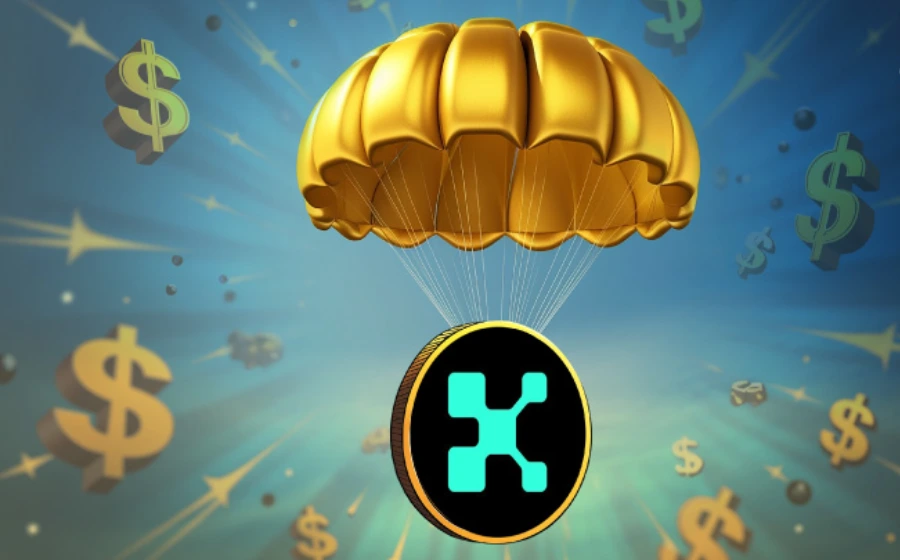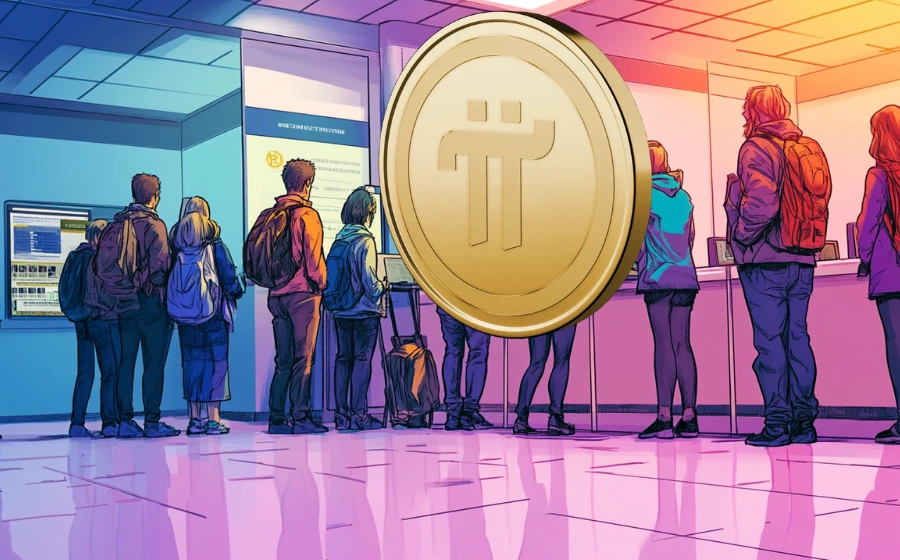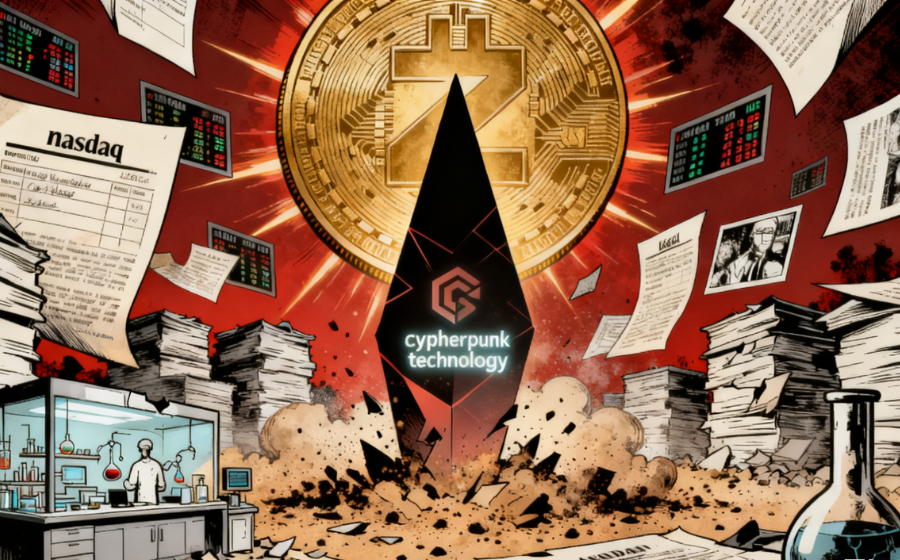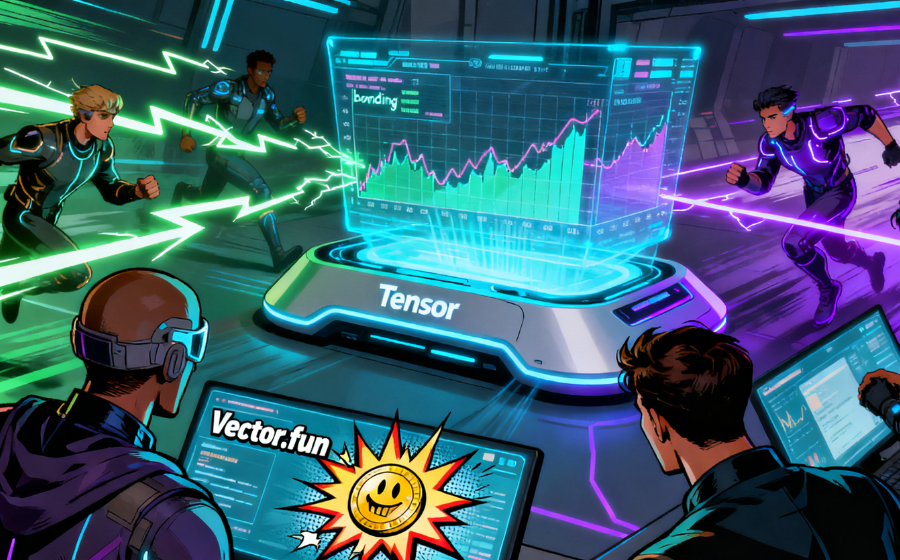
KEYTAKEAWAYS
- BitMine is shifting from a hardware centered mining business toward a long term asset strategy that aligns the company with the evolution of Ethereum.
- The company now operates with a dual identity by maintaining its immersion cooling infrastructure while exploring a treasury model shaped by supply, staking and network participation.
- Its transition reflects a broader industry movement as crypto steps away from a purely mining driven era and moves into a cycle defined by assets, incentives and on chain roles.

CONTENT

A LANDSCAPE SHAPED BY MACHINES AND QUIET AMBITION
In the open fields of Pecos, Texas the horizon stretches so far that distance feels blurred. Light moves slowly across the metal roofs of industrial shelters where the sound of immersion cooling repeats with steady calm. Inside each container, rows of machines sit beneath clear liquid while faint ripples replace the sharp noise of fans. It is a controlled environment built for efficiency, one that reflects the roots of BitMine.
Years of operation at these sites shaped the company’s early identity. Engineers worked beside tanks filled with dielectric fluid, monitoring temperature, pumps and circuit load. Every day brought another round of adjustments. Mining remained a business of precision, and BitMine treated it as such. The team focused on uptime, power quality and the delicate balance between heat and performance.
As the broader mining industry matured, energy costs shifted and competition intensified. Gains from hardware became smaller. Growth depended not only on machines but also on new ideas. BitMine found itself in a world where engineering still mattered yet no longer defined the entire picture. The company could feel the limits of the first era of crypto pressing in from all sides.
This environment became the backdrop for a quiet question inside the company. What would follow after hardware reached its ceiling. And more importantly, what role could a mining company play in a future shaped less by machines and more by long term participation in digital networks.
THE RISE OF A TREASURY MINDSET
Momentum toward a new direction began to form during the next cycle. Ethereum had changed after its transition to proof of stake. The network now offered staking rewards, deeper application layers and a broader economic surface. For many organizations, holding the asset started to represent something beyond its price. It became a way to align with the structure of the network itself.
This new environment encouraged BitMine to think about its place in the ecosystem. The idea of a treasury began to surface. The company explored the concept of long term accumulation, supply positioning and participation in the network’s incentive system. Instead of producing digital assets through machines it considered the value of holding them over time.
A shift of this scale required new capabilities. Mining depended on power and hardware while a treasury required planning, governance and a structured understanding of risk. BitMine started to operate between these two visions. It continued to run its physical facilities yet also imagined a future that connected more closely with Ethereum.
The company was no longer only looking at daily output. It was questioning how digital assets could shape its long term strategy and how a mining background could evolve into a broader on chain role.
TWO PATHS INTERSECTING IN ONE COMPANY
Across the industry, crypto was moving from a phase defined by energy to one influenced by assets and networks. Many companies responded by choosing a single direction. BitMine took a different approach. It carried forward its technical foundation while exploring a second identity centered on long term exposure to Ethereum.
The result was a company shaped by two parallel paths.
One path was physical. Containers, liquid cooling systems and power infrastructure continued to operate with the same precision as before. The rhythm of engineering still formed a stable base for the company. This part of BitMine remained familiar and concrete.
The other path was strategic. Discussions within the company shifted toward long term value, staking participation and the role of Ethereum in future cycles. BitMine approached these topics from the perspective of an organization trying to understand what the next era of crypto would demand.
When these two paths came together, BitMine became a rare example of how a mining company could evolve in an industry that no longer fits neatly into its original categories. It was not abandoning its early identity, yet it was not tied to it either. Instead, it began shaping a hybrid position that combined operational expertise with asset oriented thinking.
Such a position attracted attention because it mirrored the industry itself. Crypto was in a moment of transition. Miners, validators, treasuries and protocols were interacting in new ways. BitMine’s story illustrated how a company could move through this uncertainty while trying to remain part of multiple layers of the ecosystem.
STANDING AT THE EDGE OF A NEW INDUSTRY CYCLE
BitMine’s next chapter remains open. The company still runs its immersion sites and still depends on the reliability of its physical operations. At the same time it continues to explore how a treasury model could influence its future. This mix of old and new places BitMine on the threshold of a cycle in which the center of gravity in crypto is gradually shifting.
More organizations are expected to follow similar paths. They will combine physical infrastructure with on chain participation. They will treat digital assets not only as output but also as strategic tools. They will search for roles that make sense in a world where mining and network activity coexist.
For BitMine, much will depend on how it presents its asset strategy, how it participates in Ethereum and how it explains the connection between its past and its future. None of these elements are fixed. They require time and continued clarity. But BitMine already occupies a notable position in the market. Its identity is shaped not only by its engineering background but also by the direction it is choosing to explore.
In many ways the company’s story represents a larger shift. It reflects a moment when crypto steps away from hardware alone and begins to define itself through long term incentives and network alignment. BitMine stands inside this transition, searching for its own place while the industry continues to move forward.














